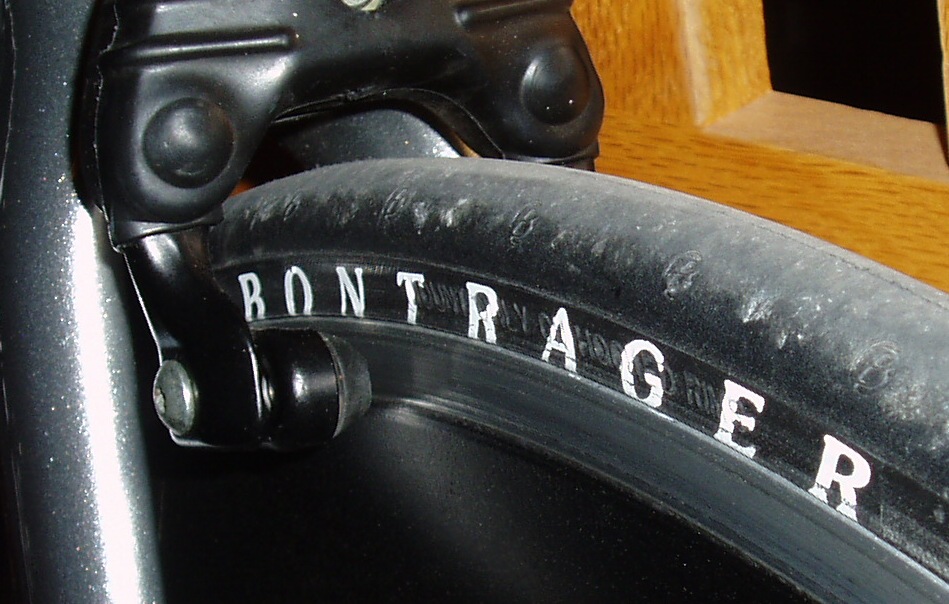I couldn't find this posted or discussed- but very interesting aero data- comparing various zipp wheels- on an aero fram P3, with rider, and actual savings gained versus nebulous "save x time by using this wheel"
http://www.zipp.com/...pAeroEdgeFlyer_2.pdf
For example- zipp- says the 1080 is 8 seconds faster than an 808- when used in rear position- in the above chart.
When they talk about their wheels in the product section- they say the 1080 is 16 seconds faster than the 808 (the seconds are nebulous and nicely doubled- but they aren't real world- i.e. rider and bike)
http://www.zipp.com/...?SortField=ISBN,ISBN
When you start looking at the numbers- the top rider chart seems inflated- (and of course- their stand alone data- has always been inflated) if we use data on zipp's webite- such as
http://www.zipp.com/.../ZippCatalog2007.pdf on page 36...
victory and just another finish. Which explains why cyclist and triathletes are so obsessed with watts.
So- let's give Zipp the benefit of the doubt on their numbers and be in the middle where 1 watt = 2.5 seconds. So when you compare the 808 versus 1080- with the top chart- they are saying a difference of 33 to 35 watts- or 2 watt difference- is actually 1.5 seconds x 2 watts = 3 seconds- not the 16 seconds listed above in the wheel data section (as that's 8.0 seconds/watt), nor the 10 seconds (as that's 5.0 seconds/watt) listed with their rider/Cancellera chart. And ALL their numbers in the Cancellera chart uses 1 watt = to 3 seconds or more... in a sense inflating the savings of every single wheel- over the base wheel. They make a fine product- but man- can't they at least be consistent? Or give a range- 24 watts saving = 48 to 72 seconds... not just the 72 seconds.
http://www.zipp.com/...pAeroEdgeFlyer_2.pdf
For example- zipp- says the 1080 is 8 seconds faster than an 808- when used in rear position- in the above chart.
When they talk about their wheels in the product section- they say the 1080 is 16 seconds faster than the 808 (the seconds are nebulous and nicely doubled- but they aren't real world- i.e. rider and bike)
http://www.zipp.com/...?SortField=ISBN,ISBN
When you start looking at the numbers- the top rider chart seems inflated- (and of course- their stand alone data- has always been inflated) if we use data on zipp's webite- such as
http://www.zipp.com/.../ZippCatalog2007.pdf on page 36...
Zipp - Home of the 2 and-a-half times rounder bearing
1 watt = 2-3 seconds over 40 K. The difference between career definingvictory and just another finish. Which explains why cyclist and triathletes are so obsessed with watts.
So- let's give Zipp the benefit of the doubt on their numbers and be in the middle where 1 watt = 2.5 seconds. So when you compare the 808 versus 1080- with the top chart- they are saying a difference of 33 to 35 watts- or 2 watt difference- is actually 1.5 seconds x 2 watts = 3 seconds- not the 16 seconds listed above in the wheel data section (as that's 8.0 seconds/watt), nor the 10 seconds (as that's 5.0 seconds/watt) listed with their rider/Cancellera chart. And ALL their numbers in the Cancellera chart uses 1 watt = to 3 seconds or more... in a sense inflating the savings of every single wheel- over the base wheel. They make a fine product- but man- can't they at least be consistent? Or give a range- 24 watts saving = 48 to 72 seconds... not just the 72 seconds.







